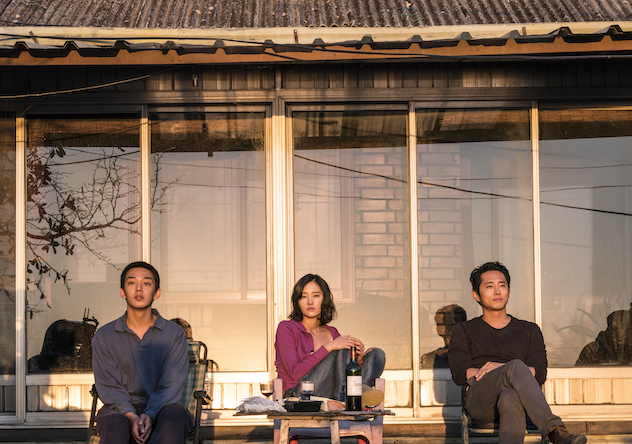Readers familiar with Haruki Murakami know all about the Japanese author’s signature literary tropes. A missing girl. A mysterious cat. An unresolved mystery. A man, usually a writer, adrift in a weird world. Those are all present in South Korean filmmaker Lee Chang-dong’s latest movie “Burning,” which is based on a Murakami short story “Barn Burning.”
This “Burning” is also beautiful. Cinematographer Hong Kyung-pyo imbues each frame with a dreamy haunting quality, from the humid bustle of its squirming city streets to the wide-open horizons and gently setting South Korean sun. Each scene is deliberate, laden with significance and pathos.
Jong-su (Ah-in Yoo), the slack-jawed protagonist of “Burning,” falls in love with an eccentric pantomime student Hae-mi (Jong-seo Jeon) who leaves the aspiring writer in charge of feeding her invisible cat before leaving for the Kalahari Desert. When she returns, she comes back with a wealthy playboy Ben (Steven Yeun) who is clearly now her main squeeze, much to Jong-su’s dismay and befuddlement.
The premise is a little weird. But what do you expect from an arthouse film? The incendiary theme emerges on multiple levels. Characters inhale on loudly crackling cigarettes with a sense of ennui. Ben talks about his penchant for burning down the grubby vinyl greenhouses that dot the countryside (which may or may not be true), while Jong-su confides in Ben about his childhood trauma of burning his mom’s clothes after she abandoned him (which is probably true). Jong-su’s father is jailed for his explosive temper. The conflict between Ben and Jong-su over the love of Hae-mi seethes almost poetically like a well-choreographed ballet. But most palpable is the desire for Hae-mi simmering in Jong-su’s loins.
Many critics have said that the hidden meaning behind “Burning” is a class conflict embodied in the two opposing male leads: the slippery Porsche-driving Ben, with his gyopo accent (by the way, his mastery of Korean is outstanding) and the poor, underemployed Jong-su who stalks Ben in his shabby lumpenproletariat truck. But I think that Ben symbolizes hyper-modern Seoul with its pared down modernist living and pasta-preparing sophisticates — as well as all of its accompanying class connotations. Meanwhile, Jong-su embodies the ramen-slurping rural Korea of yore — agricultural, earnest and sincere in its desires and expression.
This conflict plays out in slow motion, over two and a half hours to be exact. But you keep watching because you want to know what happens to Jong-su: Does he ever find the girl? Does he ever see a cat? And why is Ben such a weirdo? As with most Murakami stories, the more you seek, the less you know.
This article appears in Kore’s upcoming December 2018 issue. Subscribe here.







